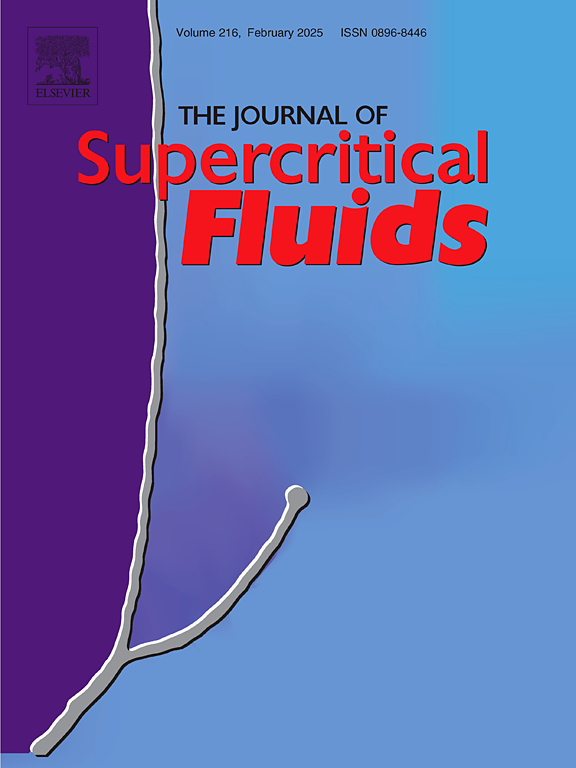Numerical analysis of mixing performance in Y-junction mixers and its impact on yields from supercritical water hydrolysis
IF 3.4
3区 工程技术
Q2 CHEMISTRY, PHYSICAL
引用次数: 0
Abstract
This study investigates the mixing behavior in a Y-junction mixer for supercritical water hydrolysis using large eddy simulation with a discrete phase model. Yield changes were simulated using a two-step reaction model with first-order kinetics, based on particles’ temporal temperature data. Effective mixing produced closely matched mass and particle flow temperature distributions, both exhibiting bell-shaped profiles near the mixed temperature. Although variations in flow rate within ±25 % and changes in the inlet temperatures of supercritical water from 350 °C to 430 °C and subcritical water from 100 °C to 170 °C did not significantly affect the overall mixing performance, they did alter the mixed temperature and, subsequently, yield changes. Additionally, backflow occurred when Richardson number for the subcritical inlet reached approximately 7. In effective mixing, simulated yields were approximately 15 % lower than the ideal theoretical yields, calculated using the reaction rate constant at the mixed temperature.
Y 型连接混合器的混合性能及其对超临界水水解产率影响的数值分析
本研究使用离散相模型大涡模拟法研究了超临界水水解 Y 型接合混合器中的混合行为。根据颗粒的时间温度数据,使用具有一阶动力学的两步反应模型模拟了产量变化。有效混合产生了密切匹配的质量和粒子流温度分布,两者在混合温度附近都呈现钟形曲线。虽然流速的变化在 ±25 % 范围内,超临界水的入口温度从 350 ℃ 升至 430 ℃,亚临界水的入口温度从 100 ℃ 升至 170 ℃,这些变化对整体混合性能没有显著影响,但它们确实改变了混合温度,并随之改变了产率。此外,当亚临界入口的理查森数达到约 7 时,会出现回流现象。在有效混合过程中,模拟产率比理想理论产率(使用混合温度下的反应速率常数计算)低约 15%。
本文章由计算机程序翻译,如有差异,请以英文原文为准。
求助全文
约1分钟内获得全文
求助全文
来源期刊

Journal of Supercritical Fluids
工程技术-工程:化工
CiteScore
7.60
自引率
10.30%
发文量
236
审稿时长
56 days
期刊介绍:
The Journal of Supercritical Fluids is an international journal devoted to the fundamental and applied aspects of supercritical fluids and processes. Its aim is to provide a focused platform for academic and industrial researchers to report their findings and to have ready access to the advances in this rapidly growing field. Its coverage is multidisciplinary and includes both basic and applied topics.
Thermodynamics and phase equilibria, reaction kinetics and rate processes, thermal and transport properties, and all topics related to processing such as separations (extraction, fractionation, purification, chromatography) nucleation and impregnation are within the scope. Accounts of specific engineering applications such as those encountered in food, fuel, natural products, minerals, pharmaceuticals and polymer industries are included. Topics related to high pressure equipment design, analytical techniques, sensors, and process control methodologies are also within the scope of the journal.
 求助内容:
求助内容: 应助结果提醒方式:
应助结果提醒方式:


